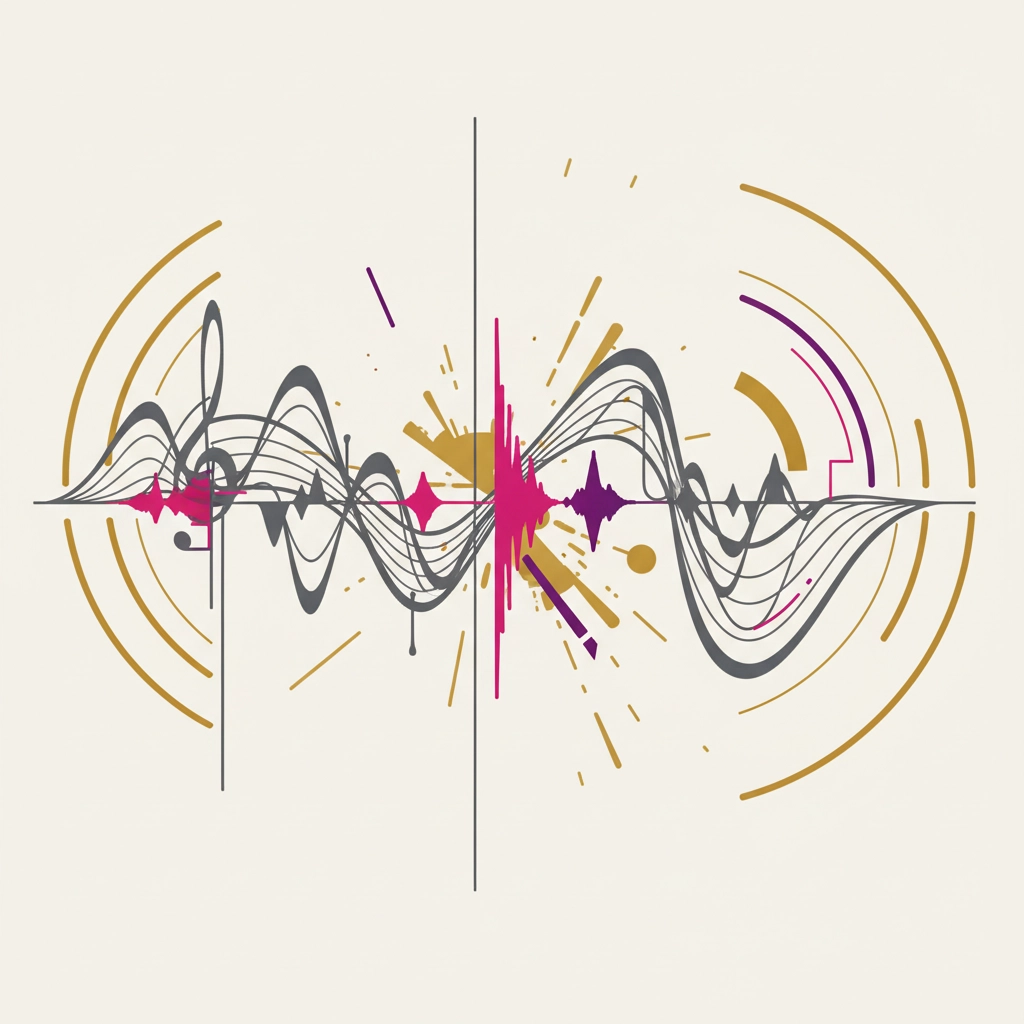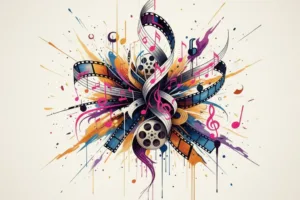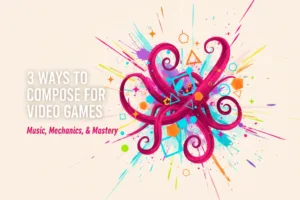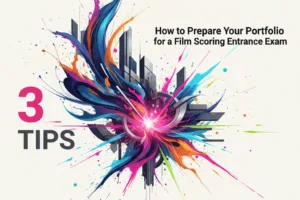
On Ear Training & Craft: Why Your Ear Matters More Than Your Plugins
- Posted by Filip Sijanec
- Date September 11, 2025
- Comments 0 comment
Reading Time: 6 minutes
In today’s digital landscape, it’s tempting to lean heavily on technology. We have plugins that can analyse frequencies, suggest harmonic progressions, and even “fix” our mixes automatically. But here’s the truth that every seasoned composer knows: your ear is still your most powerful tool.
Whether you’re preparing for NFTS composition preparation or working on portfolio preparation for composition exams, the fundamental skill that separates good composers from great ones isn’t their plugin collection: it’s their ability to truly hear what’s happening in their music.
The Plugin Trap: When Technology Becomes a Crutch
Don’t get me wrong: plugins are incredibly useful. They help us shape sound, add colour, and achieve effects that would be impossible with acoustic instruments alone. But they should enhance your musical judgment, not replace it.
I’ve seen countless students in private composition lessons who can navigate complex software but struggle to identify when their orchestration is muddy or when their harmonic progression lacks direction. They’ve become so dependent on visual feedback: spectrum analysers, MIDI piano rolls, waveform displays, that they’ve stopped trusting their ears.
Ask yourself this: If you removed all the visual elements from your DAW and could only listen, would you still know how to make your composition work?
The reality is that listeners don’t experience your music through spectrum analysers. They experience it through their ears, in real acoustic spaces, with all the imperfections and nuances that make music human.
The Jazz Principle: Hear It First, Play It Second
There’s a foundational principle in jazz that applies directly to composition and orchestration: “First you need to hear it, then you can play it.” This isn’t just about improvisation: it’s about developing an internal musical compass that guides every creative decision.
When you’re working on film and classical composition courses or preparing for entrance exams at institutions like RCM, this principle becomes crucial. You need to be able to hear:
- Balance: How each instrument sits in the ensemble
- Space: Where silence creates as much impact as sound
- Harmony: How chord progressions create tension and release
- Texture: How different timbres interact and support the musical narrative
This internal hearing develops gradually, but it requires intentional practice. Start by listening to orchestral works: not casually, but analytically. Focus on one section at a time. Can you hear how the strings support the woodwind melody? How does the brass enter to create climactic moments?
Try this exercise: Listen to a piece you love, then try to reproduce the orchestration from memory. Not the notes necessarily, but the feel: which instruments carry the melody, how the rhythm section supports, where the texture thickens and thins.
Live Acoustics: Your Secret Weapon
Here’s something that no plugin can replicate: the experience of live acoustic sound. If you’re serious about developing your compositional ear: whether for composing for film and television or concert music: you need to immerse yourself in live acoustic environments.
Pay attention at concerts. Notice how:
- Sound travels differently in different spaces
- Live instruments blend and separate in ways that samples can’t quite capture
- The physical space becomes part of the instrument
- Distance affects not just volume, but tonal character
This awareness transforms your approach to mixing and orchestration. You start thinking about virtual spaces, not just frequency ranges. You begin to understand why certain orchestrations work in concert halls but fall flat in film scoring, or why a chamber arrangement might need different treatment than a full orchestral piece.
Practical tip: Attend live concerts regularly, but also spend time in different acoustic spaces. Record yourself humming or clapping in various rooms. Notice how reverb, reflection, and absorption affect the character of sound.
Building Your Compositional Ear: Practical Steps
Developing your ear isn’t mysterious: it’s systematic. Here are proven methods that work, whether you’re in a 1-to-1 composition mentorship or working independently:
1. Interval Training Beyond the Basics
Most people think ear training stops at identifying perfect fifths and major thirds. But compositional ear training goes deeper. Practice recognizing:
- Chord inversions and their emotional impact
- Voice leading patterns that create smooth or dramatic motion
- Textural changes in orchestration
2. Transcription as Analysis
Don’t just transcribe melodies: transcribe entire arrangements. Start with simple pieces and work up to full orchestral scores. This forces you to hear every layer, not just the obvious parts.
3. Critical Listening Sessions
Set aside time each week for focused listening. Choose pieces in the style you want to master: whether that’s for preparation for composition courses or personal development. Listen multiple times, focusing on different elements each time.
The Academic Advantage: Why This Matters for Your Future
If you’re working toward RCM composition lessons or NFTS composition preparation, developing your ear gives you a massive advantage in several ways:
Portfolio Development: Admissions committees can immediately tell the difference between someone who composes by ear versus someone who relies heavily on software templates. Your pieces will have more organic flow and better proportions.
Exam Performance: Many entrance exams include listening components. Students with well-developed ears consistently outperform those who’ve focused only on technical skills.
Long-term Success: Once you’re in your program, whether film and classical composition courses or other specialisations, you’ll learn faster and collaborate more effectively with other musicians.
Beyond the Classroom: Real-World Applications
The benefits of ear-first composition extend far beyond academic settings. In professional contexts, especially in composing for film and television, directors and producers value composers who can:
- Quickly identify what’s not working in a cue and fix it
- Communicate musical ideas without always needing to play examples
- Adapt and revise based on verbal feedback
- Work efficiently under tight deadlines
Remember: Your ear is the only tool that travels with you to every session, every collaboration, every creative moment. Plugins might crash, software might update, but your trained ear remains constant and reliable.
Starting Your Ear Training Journey Today
The good news is that you can begin strengthening your compositional ear immediately, regardless of your current level:
Week 1-2: Focus on single-line listening. Follow individual parts in complex arrangements.
Week 3-4: Work on harmonic listening. Identify chord progressions and how they create motion.
Week 5-6: Tackle orchestral textures. Notice how different instruments combine and separate.
Week 7-8: Apply your developing skills to your own work. Compose something, then listen critically as if hearing it for the first time.
The journey of developing your compositional ear is ongoing: I’m still discovering new details in pieces I’ve known for years. But the investment pays dividends throughout your career, whether you’re pursuing composition lessons at the highest level or simply want to create more compelling music.
Your plugins will continue to evolve and improve, but your ear, properly trained, becomes a timeless asset that deepens your craft and enhances every musical decision you make. Start listening more intentionally today, and watch how it transforms not just your compositions, but your entire relationship with music.
Filip Sijanec is an award-winning composer and educator based in London. He serves as Professor at the Royal College of Music and NFTS, and teaches composition and music technology at ICMP and ThinkSpace, mentoring aspiring composers. He is the composer for an Oscar-nominated film and creates original music for film, games, theatre, and commercials.
Integrating Instruments & Orchestration: Practical Tips for Composers
You may also like

How to Compose Music for Films

How to Compose Music for Video Games

